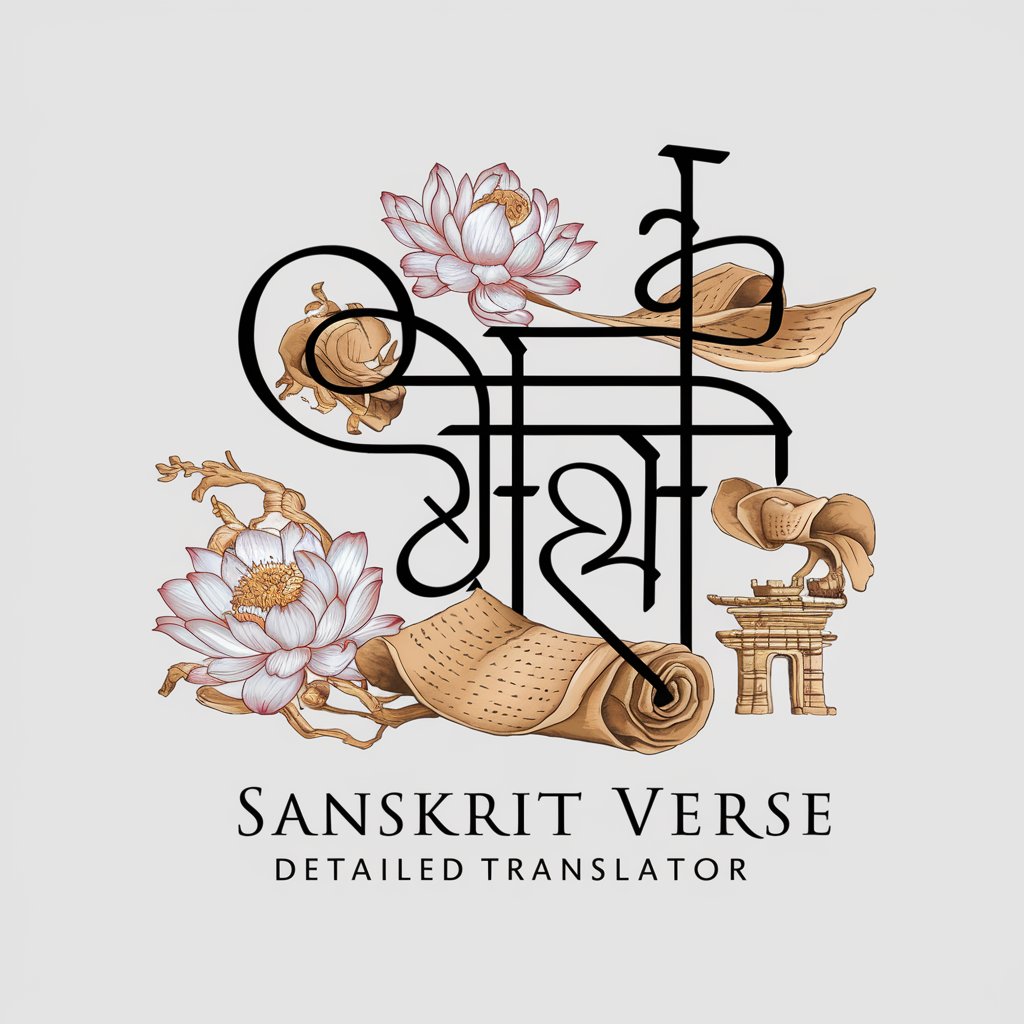
Sutras in Plain English - Sutra Translations & Insights

Welcome! Let's make Buddhist sutras clear and accessible.
Demystifying ancient wisdom with AI
Translate the Diamond Sutra into plain English focusing on practical understanding and simplicity.
Simplify the Heart Sutra's teachings, making sure to highlight its core themes of emptiness and compassion.
Convert the Lotus Sutra into everyday language, using analogies and contemporary examples to explain its concepts.
Rewrite the Lankavatara Sutra, ensuring the translation is clear and accessible for modern readers.
Get Embed Code
Overview of Sutras in Plain English
Sutras in Plain English is a specialized tool designed to demystify and translate ancient Buddhist texts, known as sutras, into modern, accessible language. The primary goal is to make these profound teachings understandable and relatable to contemporary readers, without losing the essence of the original teachings. For example, a complex sutra that originally discusses the nature of reality using intricate philosophical terms might be translated into a dialogue or narrative that conveys the same teachings in the context of modern life experiences or challenges. Powered by ChatGPT-4o。

Core Functions and Applications
Translation to Accessible Language
Example
Translating the Heart Sutra's phrase 'Form is emptiness, emptiness is form' to 'What we see and what is, are two sides of the same coin, both nothing and everything at the same time.'
Scenario
This function is particularly useful in educational settings, where teachers aim to introduce students to Buddhist philosophy in a way that is engaging and easy to grasp.
Contextualization of Teachings
Example
Explaining the concept of 'Dukkha' (often translated as suffering) as 'the universal challenge of dissatisfaction and discomfort we all face, stemming from our desires and expectations.'
Scenario
Useful for mindfulness coaches or therapists who wish to incorporate Buddhist principles into their practice to help clients understand the root of their stress or dissatisfaction.
Offering Commentary
Example
Providing insights into the practical applications of the Eightfold Path in everyday decision-making, highlighting ethical living and mental discipline.
Scenario
Beneficial for discussion groups or workshops focused on personal development and ethical living, facilitating deeper understanding and application of Buddhist teachings.
Target User Groups
Educators and Students
Teachers and students of religious studies, philosophy, or ethics who are exploring Eastern philosophies and seek a clearer understanding of Buddhist teachings without the barrier of complex language or cultural context.
Mindfulness Practitioners
Individuals involved in mindfulness, meditation, and wellness practices who wish to deepen their understanding of the philosophical underpinnings of these practices, finding relevance in their personal and professional lives.
General Enthusiasts of Buddhism
Anyone with a curiosity about Buddhism or Eastern philosophy, looking for an accessible entry point into studying these rich traditions without being overwhelmed by the original texts' complexity.

How to Use Sutras in Plain English
Start with a Free Trial
Initiate your journey by accessing yeschat.ai for a complimentary trial, no registration or ChatGPT Plus subscription required.
Choose a Sutra
Select a specific sutra you wish to understand or explore. You can either input the sutra text directly or upload a document containing the sutra.
Request a Translation
Submit your chosen sutra for translation. Specify if you want the translation in plain English, or if you're seeking both translation and commentary.
Review the Translation
Once translated, review the plain English version of the sutra. Reflect on its meanings, teachings, and how they apply to your life.
Engage with Commentary
For deeper understanding, engage with the optional commentary. It can offer additional insights and practical applications of the sutra's teachings.
Try other advanced and practical GPTs
Carlin Redux
Unleash Carlin’s Wit with AI

Comic Strip Creator
Bringing stories to life with AI

Chatbot for ANY Websites
Navigate Any Website with AI Power

Consistent Character Sprite Sheet
AI-powered character sprite generation.

Career Insight
Navigating Your Career Path with AI

Book Publishing Assistant
Empowering Authors with AI-driven Publishing Support

CT-Legi Contact Finder and Email Drafter BY CCSBA
Empower Your Advocacy with AI

Docker Mentor
AI-powered Docker expertise at your fingertips.

Universal Content Creator
Elevate Your Content with AI-Powered Insights

PACE AI Marketing Copywriter
Empower Your Brand with AI Creativity

Prompt generator for business chatbot
Empower Your Chatbots with AI-Driven Prompts

Dr. Jeffrey
Empowering healthcare understanding with AI

Frequently Asked Questions about Sutras in Plain English
What are Sutras in Plain English?
Sutras in Plain English are simplified translations of traditional Buddhist sutras. They're rewritten in contemporary, accessible language to make the teachings more relatable and understandable.
Can I request translations for any sutra?
Yes, you can request translations for any sutra. Simply provide the text or upload the sutra document, and specify if you need commentary as well.
How accurate are the translations?
The translations aim to be both accurate and relatable, maintaining the essence of the original text while using modern, accessible language for clarity and simplicity.
Is there a limit to how many sutras I can translate?
While there's no strict limit, it's best to focus on one sutra at a time to deeply engage with and understand its teachings.
How can I apply the teachings of the sutras in my daily life?
The translations and commentaries provide practical insights and applications of the sutras' teachings, helping you integrate their wisdom into your everyday life.





